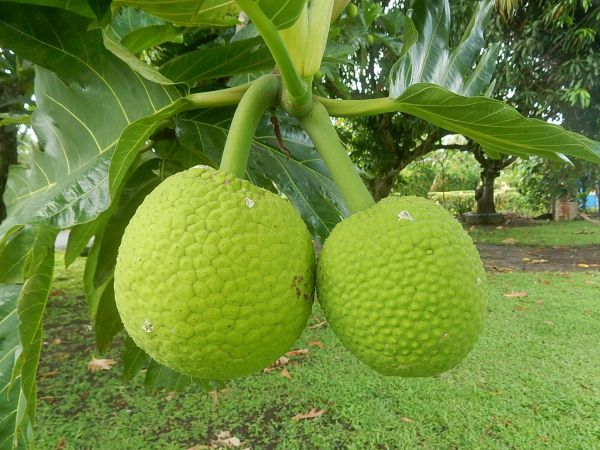Breadfruit is widely believed to have been cultivated for over 3,000 years and is now widely consumed in Africa, Asia and in other tropical countries including the Caribbean.
Wherever the breadfruit is cultivated it is known to grow in abundance and while many culinary experts are known to be indifferent to its taste in terms of flavour profile, many experts believe that a time may well come when the sheer volumes in which it is cultivated may position it to help provide food security in poverty-stricken parts of the world.
What is Breadfruit?
Scientifically termed Artocarpus altilis, breadfruit is a tropical crop, characterised by its lumpy appearance and potato-like flesh. In some parts of the world, notably the Pacific, the breadfruit is considered to be a crop of considerable cultural significance and an important staple crop. Over time the breadfruit has come increasingly into its own, ‘graduating’ from a staple on the dinner plates of poor families to part of the menu in some up- market restaurants.

The potential of the breadfruit as a staple food is believed to have been recognised by the Europeans from as early as the eighteenth century and it is believed that it was this recognition that led to the large scale importation of the plant into the Caribbean, notably Jamaica, where it was cultivated and applied as part of the staple diet for African slaves working the sugar plantations.
On the whole, however, and despite the fruit’s historical affiliation to slavery, the people of the Caribbean have come to embrace it as a part of their diet. In Guyana and elsewhere in the region, breadfruit trees are commonplace on large tracts of private lands. Over time, the fruit has become increasingly popular in local municipal markets and have held its own on dinner tables across the country.
Breadfruit trees are known to grow to heights in excess of forty feet and to sprout branches that provide shade from the tropical sun. Requiring little or no horticulture-related attention they are relatively easy to grow. They are known to adapt to different ecological conditions and usually provide fruit in abundance after about three to five years and continue to do so for decades.
The weight of a breadfruit can range between half a pound and 12 pounds. A mature breadfruit has a smooth or bumpy outer skin and may be coloured either creamy white or a pale yellow on the inside. A ripe breadfruit can have a green, yellow or yellow-brown skin.
In Guyana breadfruit is prepared for the dinner table either by boiling until soft and ‘mashy,’ on its own or along with other vegetables and meat, or else, fried in oil or butter. The local snack food industry has also embraced breadfruit chips (alongside the more widely accepted potato and plantain chips) which are packaged and sold, though its acceptance in this form has been limited.
Breadfruit’s benefits
Apart from being rich in complex carbohydrates breadfruit is also considered to be a good source of high-quality protein and has also been found to contain higher amounts of essential amino acids. Medical opinion also holds that a cup of raw breadfruit contains a variety of beneficial vitamins and minerals, including calcium, iron, magnesium, phosphorus, potassium, sodium, zinc, vitamin C and vitamin B complex, among others.
Breadfruit is believed to contain antioxidant properties which makes it useful for fighting against oxidative stress and has also been found to contain phytochemicals that may help prevent atherosclerosis, a condition that causes the arteries harden and narrow due to fatty deposits. Its extract may also help inhibit high cholesterol levels, which creates susceptibility to heart disease.






